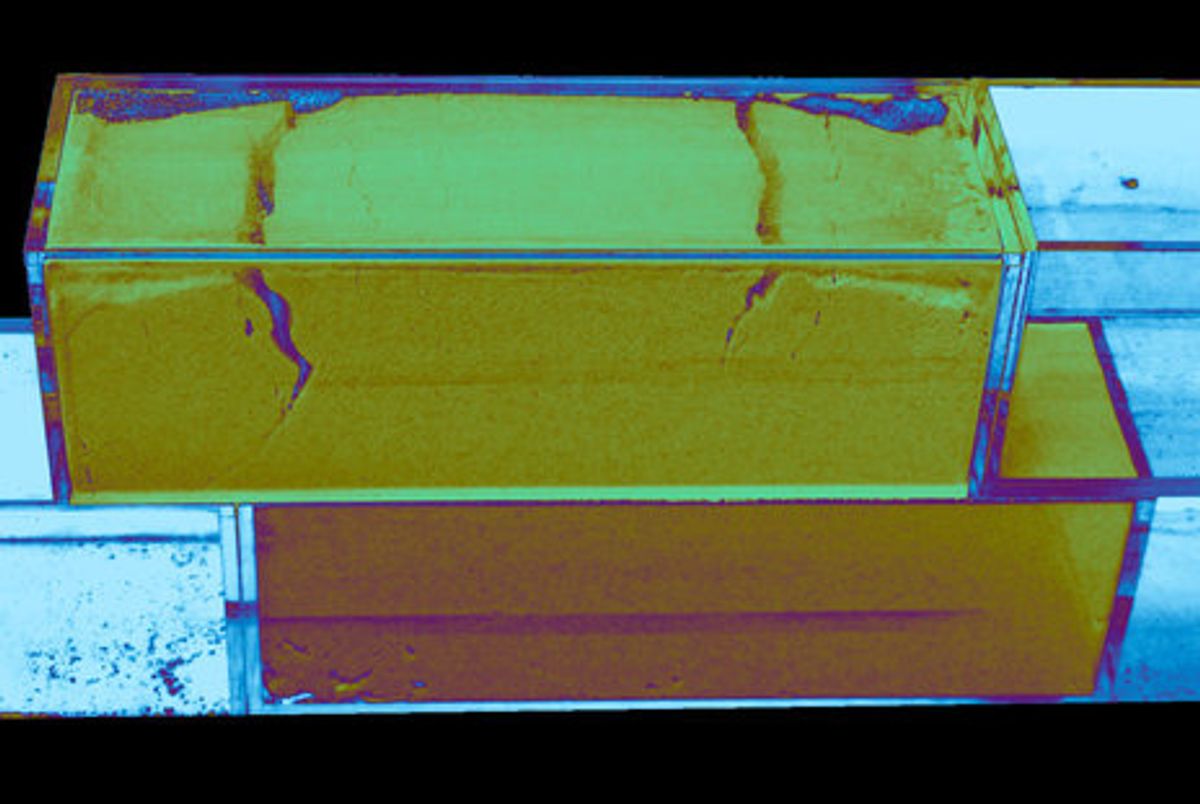Princeton University biomedical engineers say they’ve documented for the first time a voltage signal preceeding the failure of structures made of powder. It may not sound like earth-shattering research, but lots of things are, to a degree, made of powder: the cement in that bridge you drove over today, and the ground beneath your feet, to take two rather important examples.
The experiments they describe this week in Proceedings of the National Academy of Science started simply enough. The researchers filled a horizontal cylinder about two-thirds of the way with a powder, stuck a voltage probe to it and slowly rotated the cylinder. As you might imagine the powder sticks to the side until gravity takes advantage of defects in the powder’s packing, and a chunk of powder cleaves off like an Alpine avalanche. The technical term for this is a “slip event.”
Even after doing a host of discharging and control steps, Troy Shinbrot, Nam H. Kim, and Nirmal Thyagu found that so long as the voltage probe was placed near a slip-causing defect they’d record a spike in voltage about 3.4 seconds before the event. (The cylinder completes a rotation once every 12 seconds.) Just to be sure, they repeated the experiment in a variety of ways. But the results were pretty much the same.
Many materials—including plastic tape, rocks, glasses, ice—have been shown to generate an electric signal when they fail, but this, so far as the Princeton engineers could find, is the first time anyone’s shown a signal that precedes fracture. An electrical warning of impending failure is, of course, much more valuable than one that just indicates failure.
That’s just what a group in California called QuakeFinder hopes to achieve in predicting earthquakes. They looked at a host of often anectdotal indications such as ultra-low frequency (ULF) magnetic field variations, strange lights, and changes in the ionosphere. QuakeFinder concluded that the flow of charge from stressed rocks at earthquake faults probably accounted for them all. And they’ve set up a network of ULF and other sensors in California, Peru, and Taiwan.
The Princeton group showed a mix of caution and giddiness that’s characteristic of good scientists who are clearly think they’ve stumbled onto something big:
“It remains to be demonstrated how extensive the implications of our findings may be. On one front, many common materials—ceramics in turbines, chalk in cliffs, and concrete in bridges, to name three—are made from powders, and our results lead us to speculate that failure of these materials may also be preceded by telltale electrical signals. On another front, electrical disturbances have before over 250 years been reported to precede major earthquakes and rockbursts. Many of these reports are anecdotal and of uncertain reliability, however the presence of electrical earthquake precursors has been substantiated by a growing body of field measurements, and we anticipate that the ability to generate correlated electrical signals and slip events in a controlled setting will enable future research to unveil the mechanisms leading to the curious effects.”
Samuel K. Moore is the senior editor at IEEE Spectrum in charge of semiconductors coverage. An IEEE member, he has a bachelor's degree in biomedical engineering from Brown University and a master's degree in journalism from New York University.



